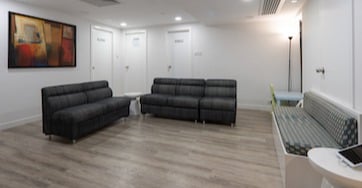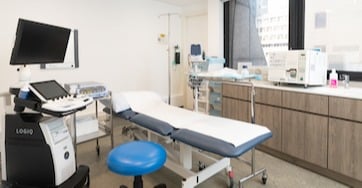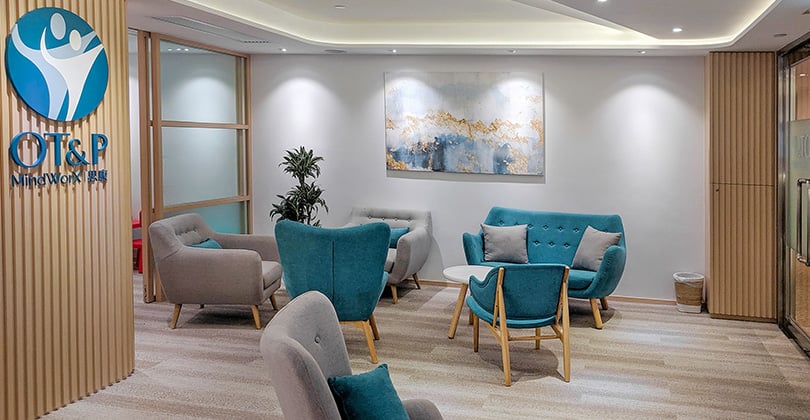A DEXA Scan, or dual-energy X-ray absorptiometry, is a medical imaging procedure that measures bone density. As an important tool for diagnosing osteoporosis and assessing fracture risk, a DEXA Scan in Hong Kong is a common and vital practice in healthcare. This post aims to explain what a DEXA Scan is, its types, what to expect before, during, and after the procedure, and its benefits and risks.
Types of DEXA Scan
While the primary goal of all DEXA Scans is to assess bone density, different types of scans can be utilized depending on the patient's specific needs and the healthcare facility's capabilities. These types include:
Central DEXA
A Central DEXA scan is the gold standard for measuring bone mineral density. It is performed on large central skeletal sites, typically the lower spine (lumbar region) and the hips. These areas are targeted because they are particularly prone to the effects of osteoporosis and are more likely to suffer fractures. The Central DEXA scan requires the patient to lie on a table while a large scanning arm moves over their body. The procedure is painless and typically takes 10 to 20 minutes. Central DEXA machines are quite large and are usually found in hospitals or medical imaging facilities.
Peripheral DEXA (pDEXA)
The peripheral DEXA scan measures bone density in the smaller peripheral areas of the body, such as the wrist, heel, or finger. These scans are often used for initial screenings in outpatient settings or health fairs as they're quick, portable, and less expensive than a Central DEXA. However, while pDEXA scans can provide a general indication of bone health, they are not as accurate as Central DEXA scans. If a pDEXA scan indicates low bone density, a follow-up with a Central DEXA scan at a medical facility is usually recommended for a more comprehensive assessment.
In certain cases, a DEXA Scan can also assess body composition, including muscle mass and fat distribution. This application is especially useful in research settings or tracking changes over time in athletes or individuals undergoing weight loss treatment.
How to read a DEXA Scan?
Your doctor will review the DEXA scan results with you and explain the findings in detail. If you want to review your results independently, you can assess the DEXA scan through two key scores: the T-score and the Z-score.
What is the T-Score?
The T-score compares your bone mineral density to that of a healthy young adult (ages 25-35) of the same sex and ethnicity. The T-score is measured in standard deviations (SD) from the average. T-scores are preferentially used in post-menopausal females and males >50 years of age. Lower T-scores mean lower bone mineral density and higher risk of bone fracture.
| T-score | Bone Health | Other Notes |
| Between +1 and -1 SD | Normal bone density | Healthy bone density |
| Between -1 and -2.5 SD | Low bone mass (osteopenia) | Increase the risk of fractures |
| Lower than -2.5 SD | Osteoporosis | Loss of bone density, higher risk of fractures |
| Lower than -2.5 SD combined with a history of osteoporosis-related fractures | Severe osteoporosis | - |
What is the Z-Score?
The Z-score compares your bone mineral density to individuals of the same age, sex, race, height, and weight. A lower Z-score may indicate an underlying medical condition affecting bone health. Z-scores are preferentially used for children, teenagers, pre-menopausal females and males <50 years of age.
What to Expect – Before, During, and After the Procedure
Understanding what to expect during a DEXA Scan can help alleviate anxiety about the procedure. Here's a breakdown of what you can anticipate before, during, and after a DEXA Scan in Hong Kong:
Before the Procedure
In preparation for a DEXA Scan, patients should avoid taking calcium supplements for at least 24 hours before the test, as they can interfere with the accuracy of the results. Furthermore, you should inform your healthcare provider if you recently had a barium examination or have been injected with a contrast material for a CT scan or radioisotope scan. These substances can also affect the results.
On the day of the scan, wear comfortable, loose-fitting clothing. Avoid clothing with zippers, belts, or buttons made of metal, as they can interfere with the imaging process. You may be asked to wear a gown if your clothes have any metal fasteners.
During the Procedure
During the scan, you will lie on a soft, padded table while a scanner passes over your body. If your hips and spine are being scanned, a block or pad might be positioned under your lower back and your legs may be raised on a platform. It is important to lie very still and may be asked to hold your breath for a few seconds while the scanner takes images.
The scan is painless and typically takes around 10 to 30 minutes, depending on the areas of the body being examined. The machine may be noisy as it captures the images, but this is normal.
After the Procedure
Once the scan is completed, you can immediately return to your normal activities. There's no recovery time required, as the procedure is noninvasive and has no aftereffects.
The results of your DEXA Scan are typically available within a few days. Your doctor will review them with you and discuss any necessary next steps. The results are reported as a T-score and Z-score, which compare your bone density to that of a healthy young adult and individuals of your same age, sex, and ethnicity, respectively.
Benefits and Risks of DEXA Scan
The primary benefit of a DEXA Scan is its role in the early detection of osteoporosis (loss of bone mineral density and mass), enabling timely intervention to prevent fractures. It's also used to monitor the effects of osteoporosis treatment.
The risks are minimal as DEXA Scans involve a small amount of X-ray radiation. However, the procedure is not recommended for pregnant women due to potential risks to the fetus.
At OT&P Healthcare, our goal is to help you better understand your health. We offer a range of services, including a DEXA Scan in Hong Kong. Contact us today to book an appointment.
 Central General Practice
Central General Practice
 Repulse Bay
Repulse Bay
 Clearwater Bay
Clearwater Bay
 BodyWorX Clinic
BodyWorX Clinic
 Central Specialist Clinic
Central Specialist Clinic
 MindWorX Clinic
MindWorX Clinic
 Partner Clinics
Partner Clinics
 Family Clinic
Family Clinic
 OT&P Annerley Midwives Clinic
OT&P Annerley Midwives Clinic





-1.png?length=500&name=%5BMKT%5DWebsite%20Blog%20Photo%20(10)-1.png)
